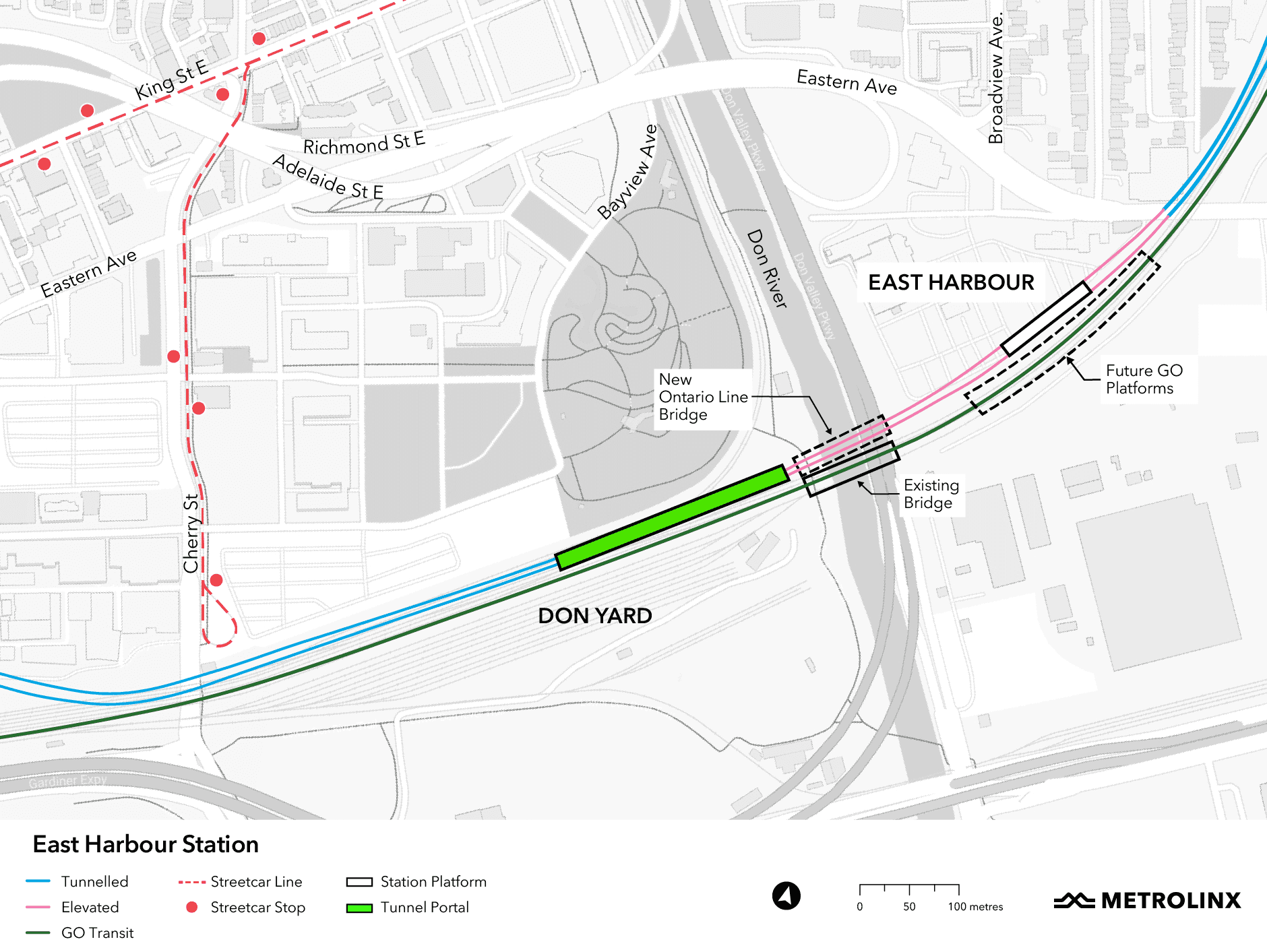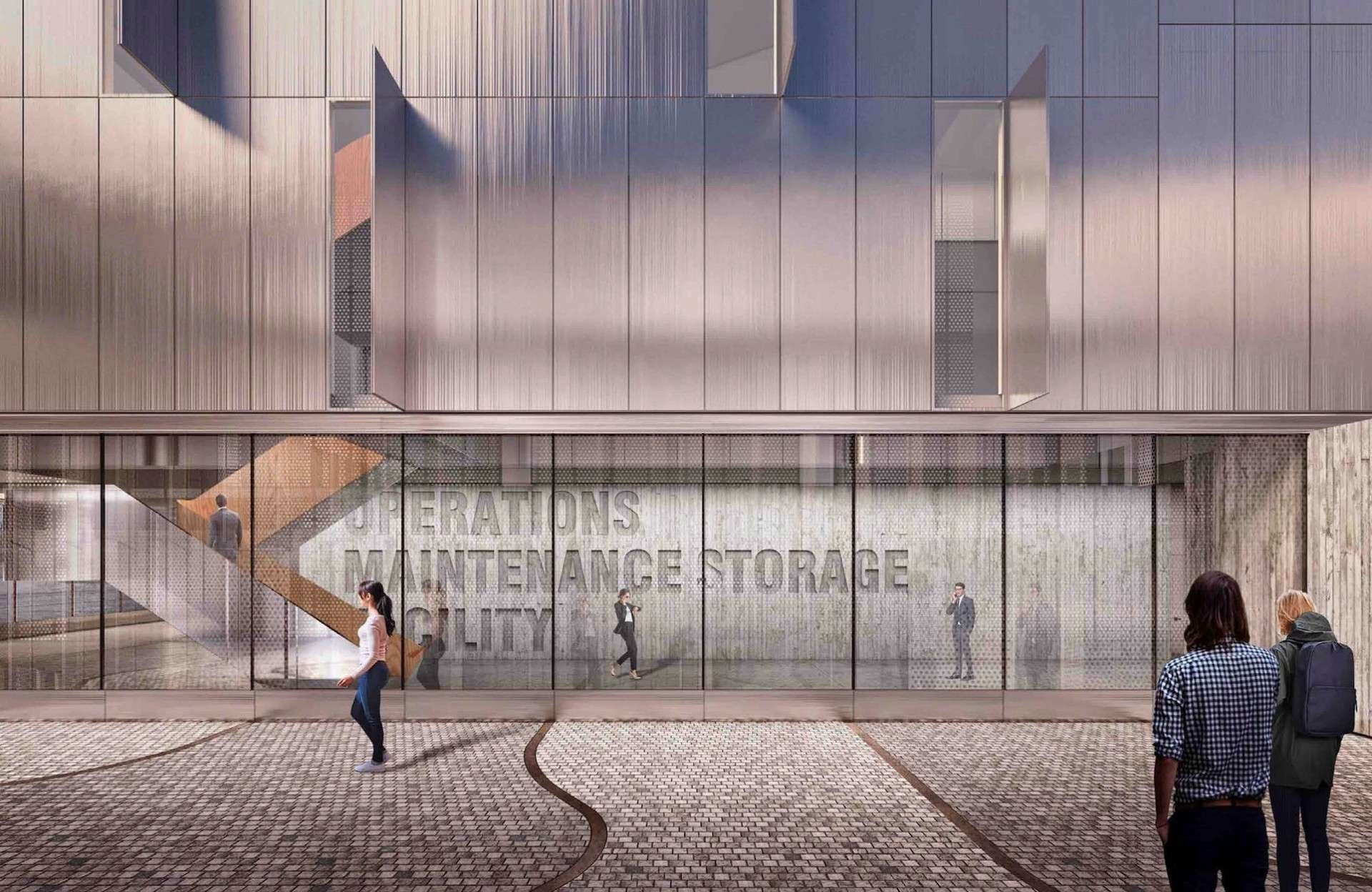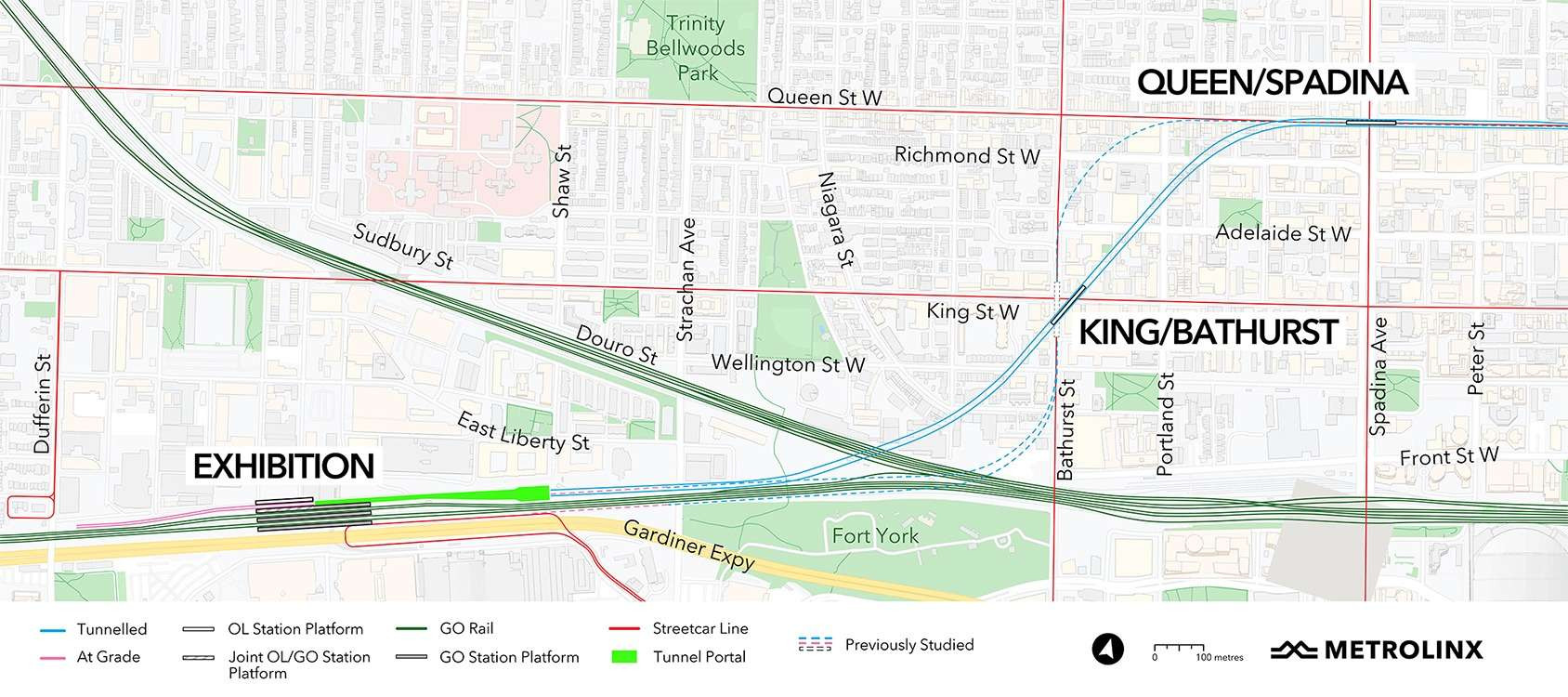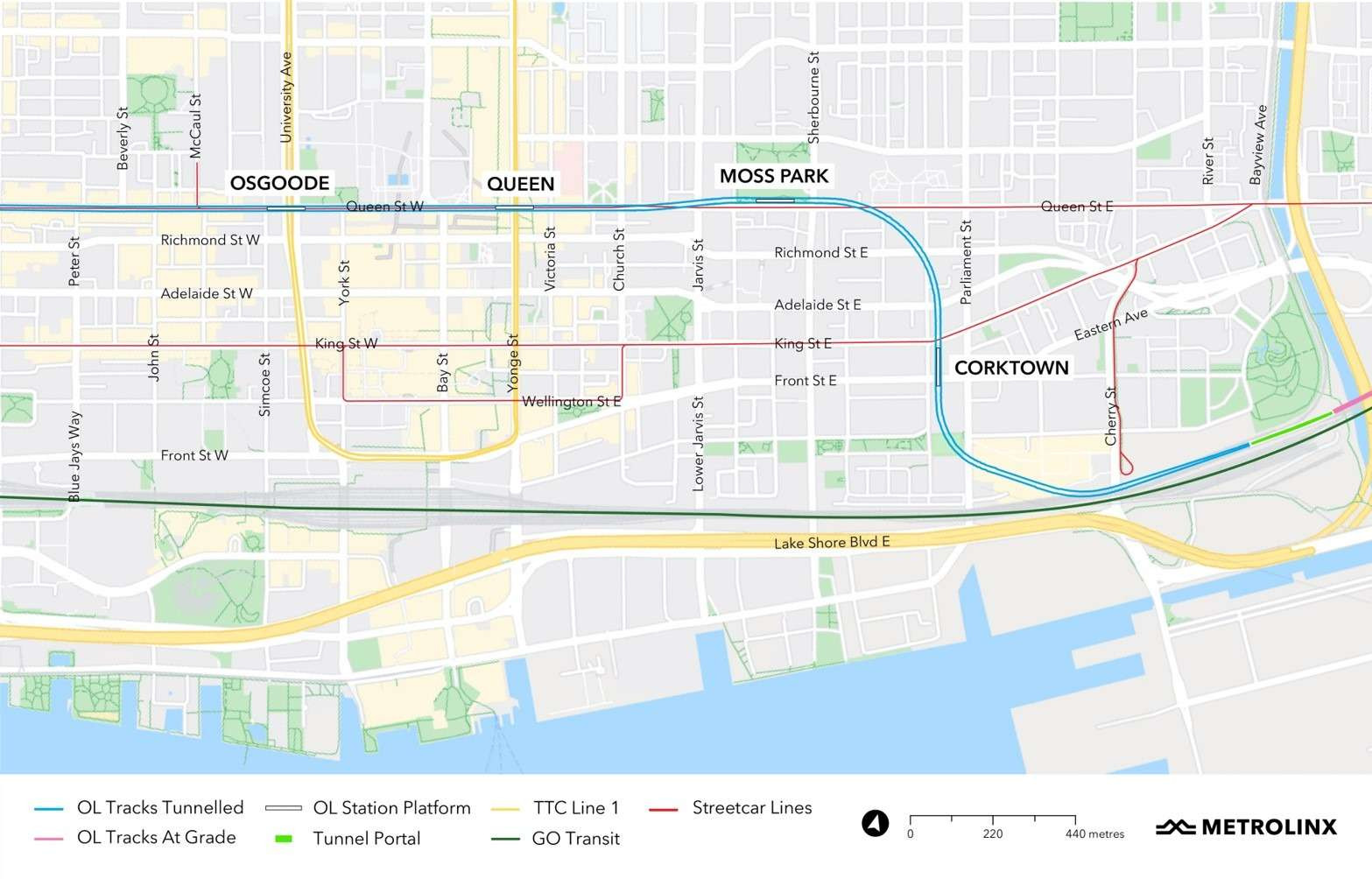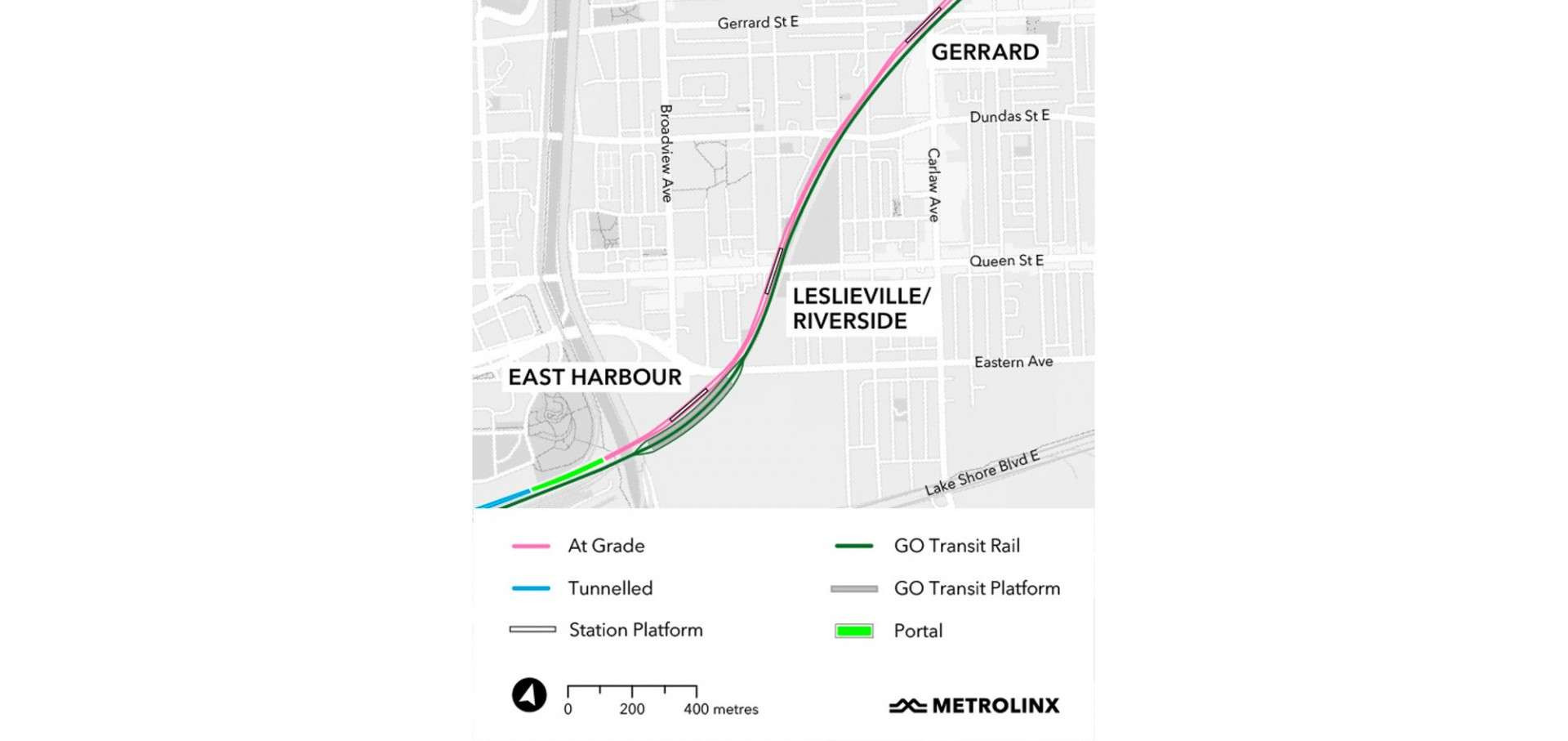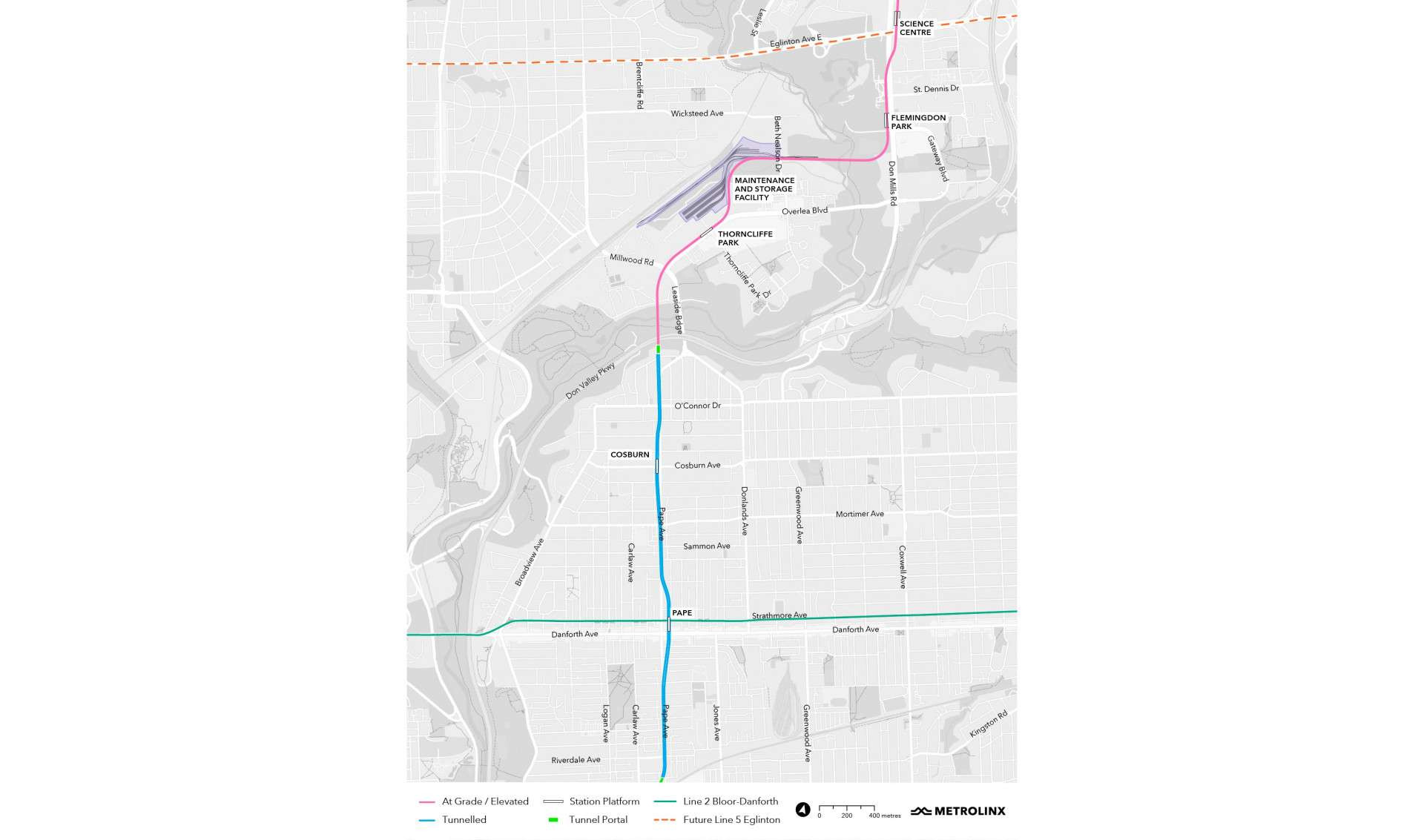Exhibition Station
Exhibition Station serves one of the most popular destinations for sports, concerts, and trade shows in the country, not to mention family attractions like the CNE. The Ontario Line at Exhibition Station will create a connection to the GO network and bring the subway system closer to many homes and businesses in the growing and vibrant Liberty Village community.
Stats and Facts*
12,100 people within walking distance to station
12,100 customers will use the station during the busiest travel hour (8,400 getting on and 3,700 getting off the Ontario Line)
6,300 transfers during the busiest travel hour
17,600 jobs in the area
*Forecast for the year 2041























